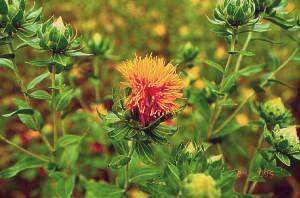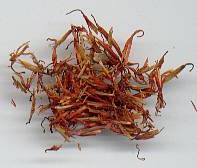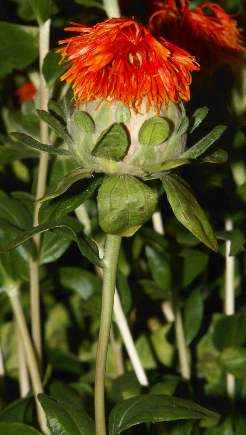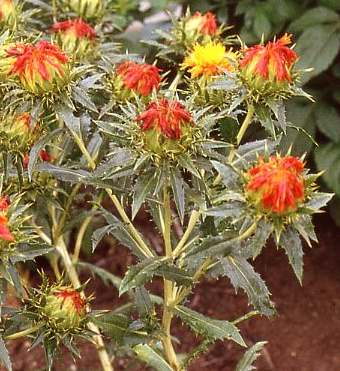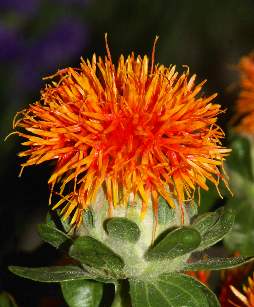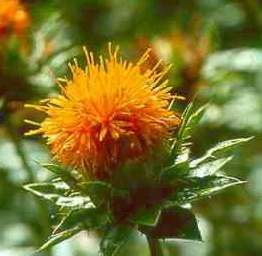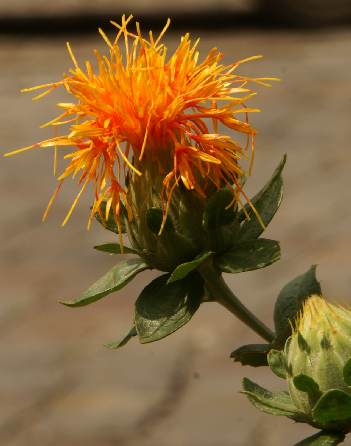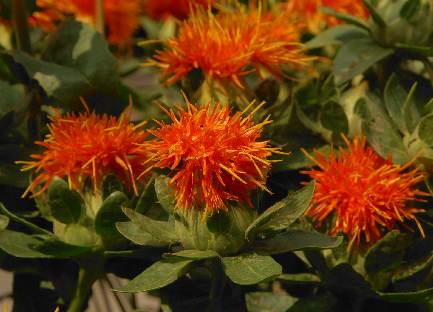
|
| Safflower flower heads |
saffronto tourists in Hungary or Northern Africa (and probably many other parts of the world). Their value as spice is nearly nil, but their staining capability justifies usage in the kitchen.
Although dried safflower flowers might appear occasionally in Mediterranean herb mixes, and have some use as a poor saffron imitate in Middle Eastern cooking, they are rarely used as a spice in their own right. Yet they are quite common in the cuisine of the Caucasus state Azərbaycan (Azerbaijan), where they help to improve the colour of broths, soups and stews, without being expected to contribute any flavour. However, many cooks are unaware between the difference between safflower and saffron, and consider the former a cheaper grade of the latter (an easy error given that both share partially the same name, see above).
A rather typical example for an Azərbaijani recipe employing safflower is piti [пити], particularly in the Northern variant common around beautiful Şəki town (Şəki pitisi [Шәки питиси]). This is a kind of nourishing soup prepared in single serving-sized portions: It is made from mutton meat and mutton tail fat together with chickpeas, which are all cooked with much water inside of a small clay pot; often, the recipe is augmented with fresh or dried fruits, nuts or chestnuts. Safflower is added towards the end of the preparation time and lends a yellowish hue to liquid.
Yellow flowers are also used in Georgian cuisine, but these usually stem from
marigold (Tagetes erecta, see also Mexican tarragon), a common ornamental elsewhere;
they appear often in the spice mix khmeli-suneli (see blue fenugreek).
The spice is usually sold dry and ground and is often simply referred to as
yellow flower
(q’vit’eli q’vavili [ყვითელი ყვავილი])
or Imeretian saffron
(imeruli zaprana [იმერული ზაფრანა]).
Marigold flowers have an delicate mild, sweet scent that somehow reminds to honey (but disappears on cooking), and substitution by safflower
flowers is possible, though the latter have even less flavour.
See annatto for more information on spices used as
food colouring.
